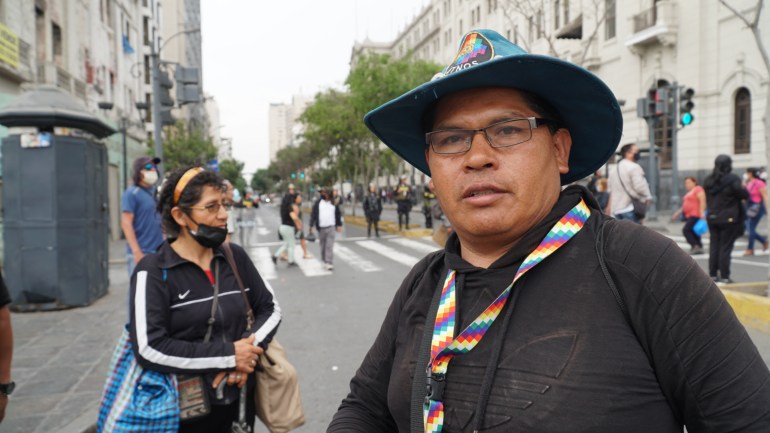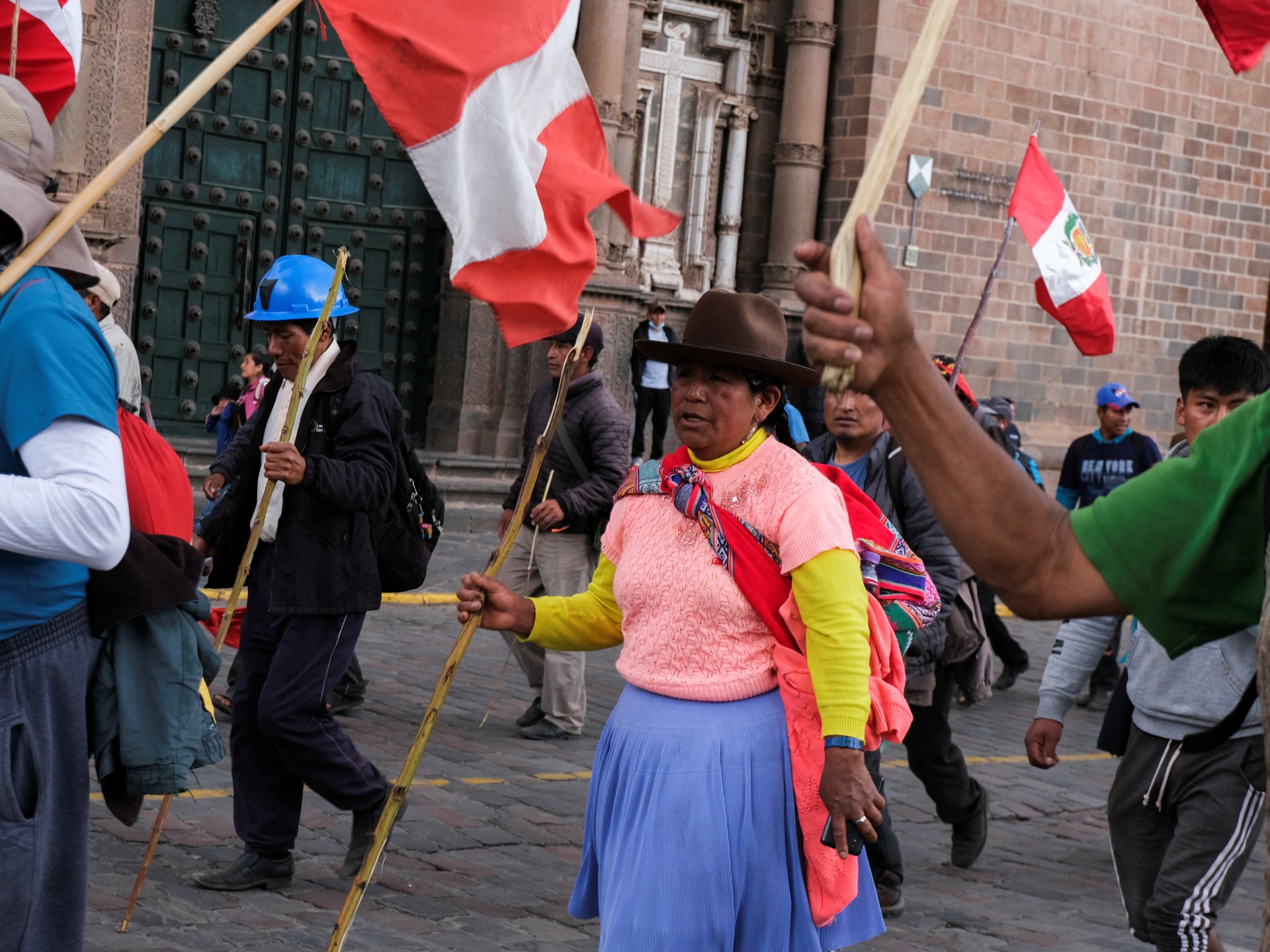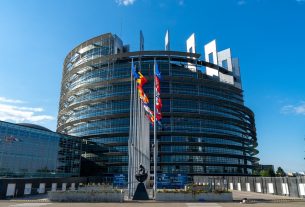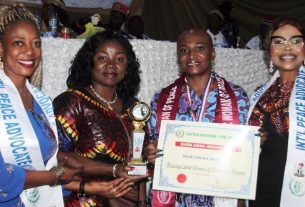Lima, Peru – Nieves Huamani was visiting family in her village in the Peruvian mountains of Cusco when news of the impeachment and arrest of Peru’s former President Pedro Castillo reached her and “pained” her heart.
Enrique Salazar, a radio host and native of Arequipa in the Andean south, said the political developments pushed him to make a 16-hour journey to the capital, Lima, to defend “an ordinary man from the countryside”, just like himself.
And Teresa Ore, who is originally from the rugged highlands of Ayacucho and sells Christmas items on the streets of Lima, took to the pavement to demand the overthrow of “the mafia” that she says currently controls Peru’s Congress.
All three are among the thousands of campesino Peruvians from the country’s rural heartland who have converged in cities across the nation to rally against a political system they say has historically excluded them.
Peru has seen a groundswell of rage and indignation over Congress’s decision to remove Castillo – a former rural teacher and union leader – from the presidency last week, with many protesters defending a man who they have come to see as a representative of sorts.
“[Castillo] represented the forgotten ones like us, from the provinces,” said Huamani, 58, who resides in Lima, where she pushes a food cart through the city’s sprawling outskirts. “But Congress never let him govern.”
‘Message that resonated’
Since Castillo‘s attempt to suspend Congress and rule by decree on December 7 ahead of an impeachment vote in the opposition-held legislature, anger over his removal and imprisonment on charges of “rebellion” and “conspiracy” has led to increasingly violent nationwide protests.
The rallies have been most virulent in the country’s impoverished Andes, where Castillo draws strong support.
Experts say several factors beyond the latest political crisis are fuelling the unrest, including a deep, cultural rift between the businesses and political classes in Lima, and residents of Peru’s Andean and Amazonian hinterlands who feel betrayed by a widely loathed Congress.
These regions also have experienced years of bubbling anger and frustration over the failure of anaemic state institutions to provide basic services, such as security, healthcare and education, beyond the capital.
“There is a very old marginalisation and centralisation in Lima, and as a result, a government with very little concern for delivering basic public services,” Jorge Aragon, a professor of political science at Peru’s Pontifical Catholic University, told Al Jazeera.
A little over a year ago, Castillo, the son of illiterate farmers from the backcountry province of Cajamarca, pledged to finally give a voice to the most abandoned sectors of the country after clinching a narrow victory over his far-right challenger, Keiko Fujimori, in a runoff election.
His pledge to redistribute mineral wealth and rewrite the country’s dictatorship-era Constitution alarmed the bourgeoisie left and far-right alike, but garnered support among campesino and Indigenous Peruvians, who leaned into Castillo‘s mantra, “No more poor people in a rich country”.
“He was a rural schoolteacher, a union leader and a man from the provinces,” said Aragon. “When he railed against inequality, poverty and the indifference of the state’s political elites, it was a message that resonated.”
Criticism of Castillo gov’t
Yet, despite Castillo‘s promises to fight for Peru’s marginalised rural class, he remained deeply unpopular nationally after dizzying cabinet reshuffles and a slurry of corruption investigations resulting in multiple impeachment attempts.
From the start, Castillo’s time in office was mired in corruption allegations, including that he received kickbacks for himself and his family in exchange for public works projects. His delayed response to rising food and fuel costs also angered ordinary Peruvians already experiencing rising poverty exacerbated by the COVID-19 pandemic, setting off large protests this year.
And Castillo’s loyalty to far-left elements within his party, including Marxist Free Peru’s party boss, Vladimir Cerron, raised alarm and sparked fears he would embrace regional autocrats and enact a radical agenda that would scare off foreign investment.
It was Congress’s third attempt to remove him from office since he assumed the presidency in July of last year that prompted Castillo‘s preemptive bid to dissolve the legislature and form an emergency government on December 7.
The decision, which was widely condemned as unconstitutional, led to his impeachment, arrest and ongoing detention, as well as the rapid swearing-in of his vice president, Dina Boluarte, as president.
Boluarte has appealed for calm and time to unify a deeply polarised country. But her efforts to quell the unrest have failed so far, and this week her government imposed a nationwide state of emergency for 30 days, as well as a curfew in 15 of the country’s 24 departments.
Meanwhile, on Thursday, a judge ordered Castillo to remain in pretrial detention for 18 months while the Peruvian authorities prepare the charges against him and his former prime minister, Anibal Torres.
The move further inflamed the protests, and violent clashes between protesters and armed forces erupted in the Andean department of Ayacucho. The national death toll has reached at least 18 as of Friday, authorities said.

Protests growing
Yet, despite the crackdown, protesters such as Salazar, 50, the radio broadcaster from Arequipa, say they will remain in the streets until their demands are met.
Like many demonstrators, he is demanding Castillo be reinstated as president, as well as amendments to the country’s Constitution and the shutdown of Congress, which has a disapproval rating of 86 percent, according to a November poll by the Institute for Peruvian Studies think tank.
Indigenous leaders from the Amazon also told Al Jazeera this week that mass mobilisations from their territories to Lima were underway – but the issues at the heart of their protest go beyond Castillo alone.
“Our mobilisation has no interest in liberating Castillo,” Jorge Chaoca, an Ashaninka leader from the central Amazon region of Peru, said in a phone interview. Chaoca and other Indigenous leaders have said the state’s inability to protect tribes from drug traffickers in the region has led to death threats, territorial invasions and soaring deforestation.
“Two thousand brothers and sisters are marching on Lima to drive out the useless, corrupt, coup-plotting, delinquent, murderous, looting rats in Congress,” he said.
And in Lima’s San Martin Plaza, a focal point of protests in the capital, the influx of protesters from Peru’s heartland, backed by rural unions and campesino and Indigenous organisations, continues to expand.
“He’s a man of the people and comes from the countryside. And the powerful don’t like that. They won’t accept it,” said Huamani, the demonstrator from the Cusco region. “I came here to help fight.”



